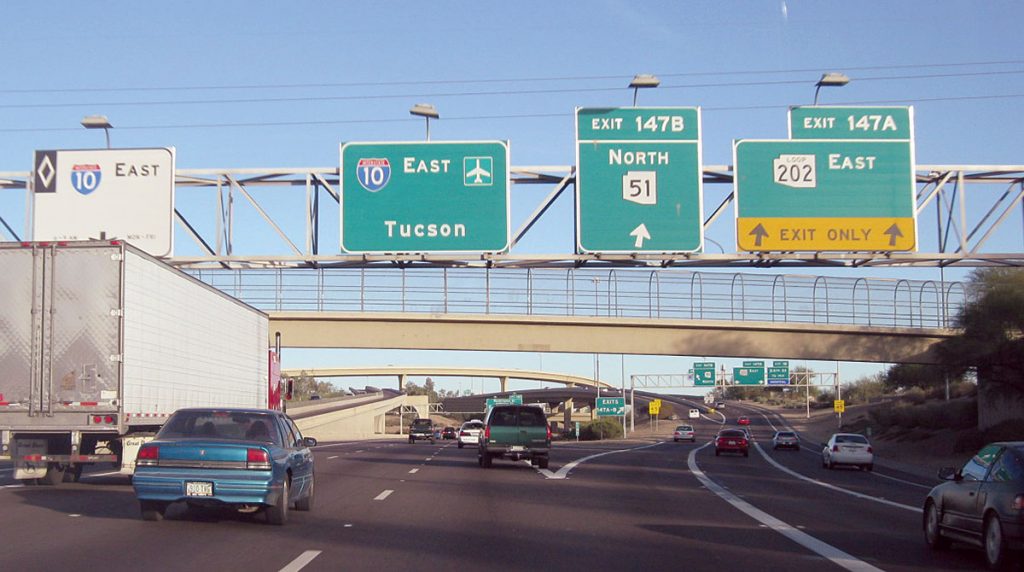This means keep your eyes UP and looking down the road. Many drivers focus on the road only 5 or 8 seconds ahead. Defensive Driving means you should be looking about 15-20 seconds ahead of your vehicle, farther if you can. This gives you the time to recognize and avoid most potential hazards before they become a problem. You’ll see Valley Metro buses or construction areas, traffic congestion, truck entrances, mishaps, etc. This technique is also useful for new drivers when learning how to steer. Keeping your eyes focused far down the road (instead of just past the end of the hood) creates stability in the roadway. In other words, it helps eliminate the unsteady weaving that is one characteristic of a novice driver.
There are other important ways to use your vision as a Defensive Driving tool for safe driving. Drivers should see, and be mindful of, everything around them on both sides and for several hundred feet ahead (about two blocks) and also to the rear. Do this and you’ll be able to see and avoid the immediate hazards others don’t notice: balls rolling into the street followed by children, cars about to pull out from parallel parking, pedestrians hidden between vehicles, runaway trucks bearing down on you from behind, etc.
Here’s another Defensive Driving tip. Don’t concentrate on any one thing in your field of view for more than a second. Your focused field of vision is very narrow, less than 5 feet wide at 100 feet. Everything else you see is first picked up by your peripheral vision, which is effective at picking up motion but doesn’t provide a clear view. If you don’t believe this, hold your watch arm out to its full extension, and bend your wrist so you can look directly at your knuckles. Now, while staring at your knuckles, try to see what time it is without moving your eyes. While your watch is within your field of view, your view of it is unfocused. For the purposes of driving, you, therefore, need to keep your focused vision moving in a scanning “pattern” so that you clearly see everything that may affect your progress.
The importance of your peripheral vision is that while it is not clear or focused, it detects movement—it is your “early warning” vision. If you allow your eyes to remain fixed on any one thing, your peripheral vision immediately begins to narrow down into “tunnel” vision—and you lose your ability to detect movement to the sides. Keeping your eyes moving prevents this from occurring.
Your vision is perhaps the most important tool you have while driving. Use it effectively! Look as far down the road as possible, and use a scanning motion to take in and analyze everything that is happening around you or close enough to be a hazard. If you do get a ticket take our Defensive Driving class. 2passdd.com

